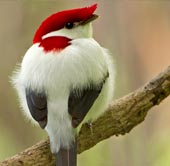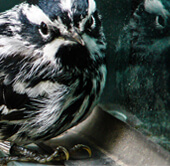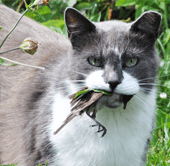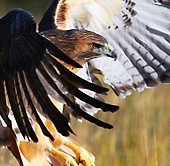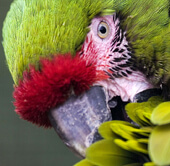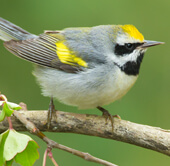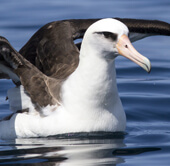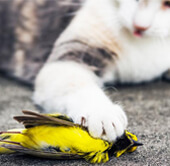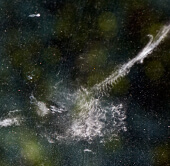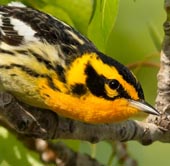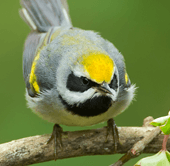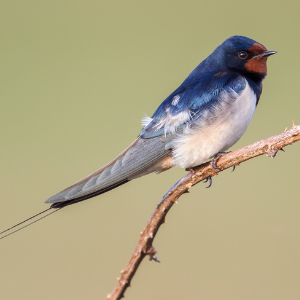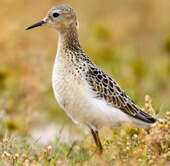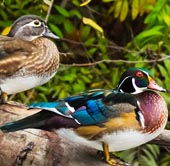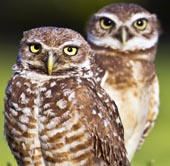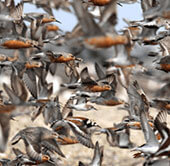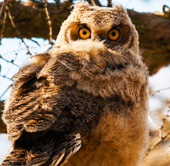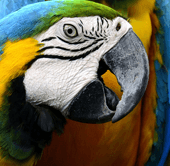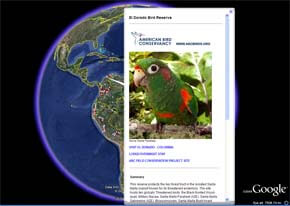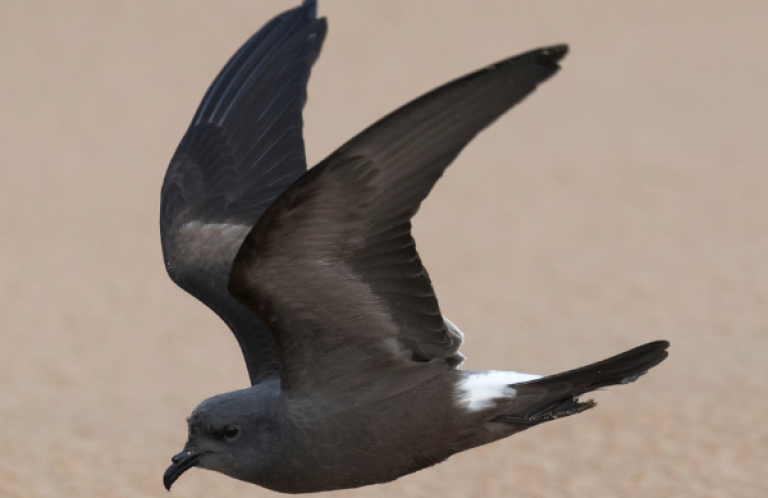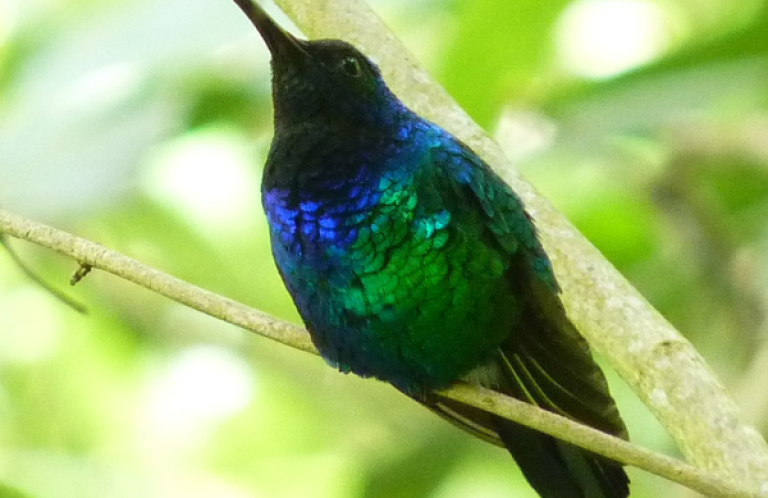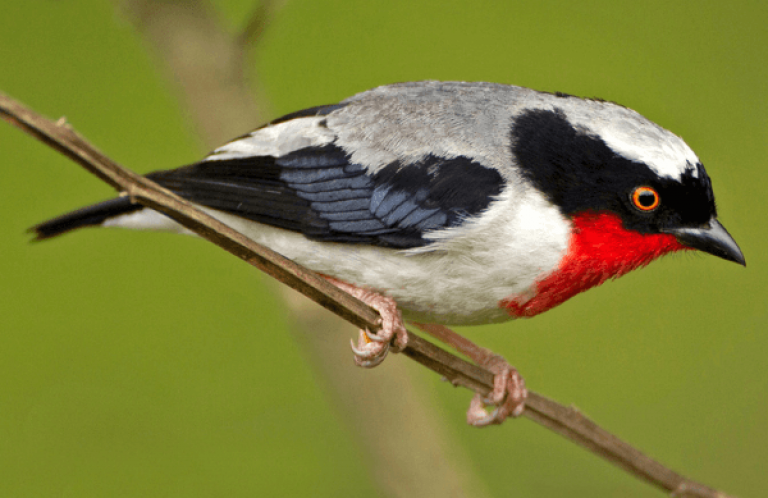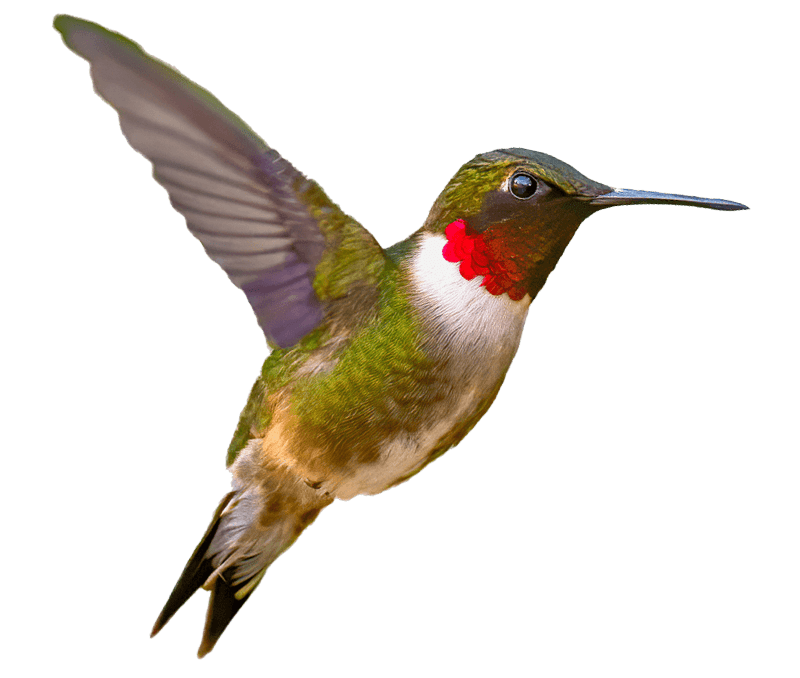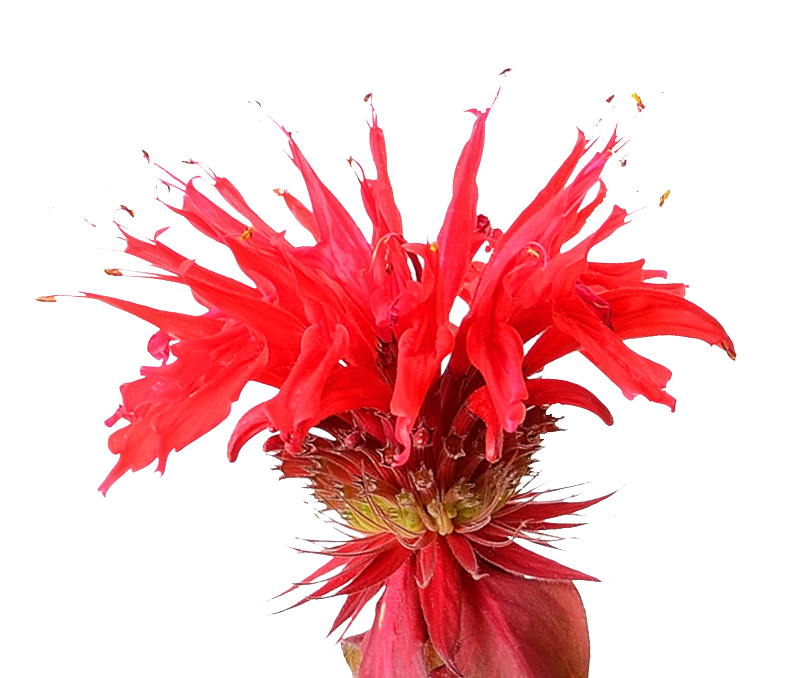New International Tourism Initiative Launched To Save Endangered Birds
For Immediate Release Contact:
, 202-234-7181 ext.210
2,000 Bird Species in 12 Countries to Benefit
|
Conservationbirding.org screen shot. |
(Washington, D.C.,
The partners have already created thirty-six reserves, 18 of which have visitor accommodation on site. These reserves include more than 250,000 acres of critically important bird habitat, providing refuge for more than 2,000 bird species—nearly half of the total found throughout all the Americas. Some of the world’s most endangered birds are among them. These include the spectacular Lear’s Macaw, the Marvelous Spatuletail, and the enigmatic Long-whiskered Owlet. Many of the reserves also provide key wintering habitat for migratory song birds, such as the declining Cerulean Warbler, that nest in the United States.
“International birding travel is already popular, and we want more birders to know that their pastime can actually contribute to saving the species they love,” said Mike Parr, Vice President of American Bird Conservancy. “Visiting birders can provide a source of direct financial support to the reserves, helping them become self-sufficient and sustainable in the long-term.”
A key component of this landmark effort is a new interactive website, www.conservationbirding.org. The site has been designed specifically to help visitors plan their birding trips to help conservation, by presenting detailed information on the reserves and ecolodges established by the conservation groups. A Google Earth component adds another dimension to the site, presenting suggested routes, photographs of lodges and birds, and videos of rare and interesting species.
“Birdwatchers in the U.S. contribute billions of dollars to the economy through the purchase of equipment, travel, books, and bird seed for backyard feeders,” said Parr. “The Conservation Birding initiative aims to tap into this market to cover the costs of managing habitat at each of these rare bird reserves.”
Eighteen of the reserves protect Alliance for Zero Extinction sites – the last refuges for some of the world’s rarest species. Not only are these places important for birds, but a new study has shown that they are often carbon stores, watersheds, and even cultural centers, since they exhibit high diversity among rare indigenous languages.
One country where birding tourism is rapidly gaining popularity is Colombia, and one lucky group of birders recently made a special discovery when they found a previously unknown species of owl – the Santa Marta Screech-Owl – during an American Bird Conservancy-led bird tour to the El Dorado Reserve in the north of the country. Another previously unknown species of antpitta was recently discovered by local ornithologists at another of the Colombian reserves.
The partners plan to continue growing the reserve network, and just recently added two new municipal reserves in Bolivia. The work is supported by a range of donors including the Blue Moon Fund, Conservation International, the Jeniam Foundation, the Gordon and Betty Moore Foundation, New York philanthropist Robert Wilson, and many additional individual donors. If you would like to help purchase land for a reserve, or support the conservation of the reserves in another way, please contact American Bird Conservancy at
.
Current Conservation Birding partners:
American Bird Conservancy (U.S.A.); Asociación Ecosistemas Andinos – ECOAN (Peru); Jocotoco Fundación (Ecuador); ProAves Foundation (Colombia); Reserva Ecológica de Guapiaçu – REGUA (Brazil)
Media Resources:
Conservation Birding Photos: http://www.conservationbirding.org/photodownload.html
Conservation Birding Video: http://www.youtube.com/abcbirds#p/u/0/GXmYNU6ZJKg
Spatuletail Video: http://www.youtube.com/abcbirds#p/u/6/Df8jhng3xgQ
American Bird Conservancy conserves native birds and their habitats throughout the Americas by safeguarding the rarest species, conserving and restoring habitats, and reducing threats while building capacity of the bird conservation movement. ABC is a 501(c)(3) membership organization that is consistently awarded a top, four-star rating by the independent group, Charity Navigator. See www.abcbirds.org.
FREQUENTLY ASKED QUESTIONS
How many birds are there in the world?
There are approximately 10,000 bird species in the world.
What is the world’s rarest bird?
There are a number of bird species that have not been recorded in the wild in recent years and may or may not be extinct. The Ivory-billed Woodpecker is a recent high-profile example. The Hawaiian Crow is presently the rarest bird known to persist in the United States. However, the entire population of fewer than 100 birds is currently held in captivity. Several other species around the world are only known in captivity at present, following the extinction of their wild populations. These include the Socorro Dove, the Spix’s Macaw, and the Alagoas Curassow.
Can ecotourism stop extinction?
Ecotourism provides a significant contribution to the economies of many countries around the world. South Africa uses tourism income to provide significant financial support to its National Parks system, as do Ecuador, and Costa Rica. In the case of reserves run by American Bird Conservancy and its partners, a relatively few visitors can cover the modest costs of supporting a reserve of several thousand acres. The impact of tourists on the environment can become an issue, so it is important to ensure that birding tourists have a low impact, for example by managing group size and total visitation numbers.
How many birding tourists are there?
U.S. Fish and Wildlife Service public surveys regularly show that more than 15 million Americans travel away from home each year to watch birds, spending more than $30 billion in the process. A much smaller number make long-distance and international trips, and though we do not have precise numbers for birding tourists traveling to each country, a number of specialized companies both in the U.S. and Europe service this market (e.g. Victor Emanuel Nature Tours, Sunbird, and Birdquest).
Who has seen the most birds?
It is widely considered to be impossible to see all the world’s birds in one lifetime. Tom Gullick has seen 87% of them, while John Hornbuckle and Hugh Buck have each seen more than 84%.
Which is the hardest bird see?
This is a judgment call, but among the hardest are:
- The Junin Rail, a tiny, primarily nocturnal marshbird that only lives in the dense reeds of one high-altitude Peruvian lake.
- The Long-whiskered Owlet, only seen in the wild by very few people in history, despite many more having heard it at the one area it can be found in a dense Andean cloud forest.
- The Inaccessible Island Rail, another skulking bird of the dense grass found only on Inaccessible Island, one of Earth’s most remote spots.

